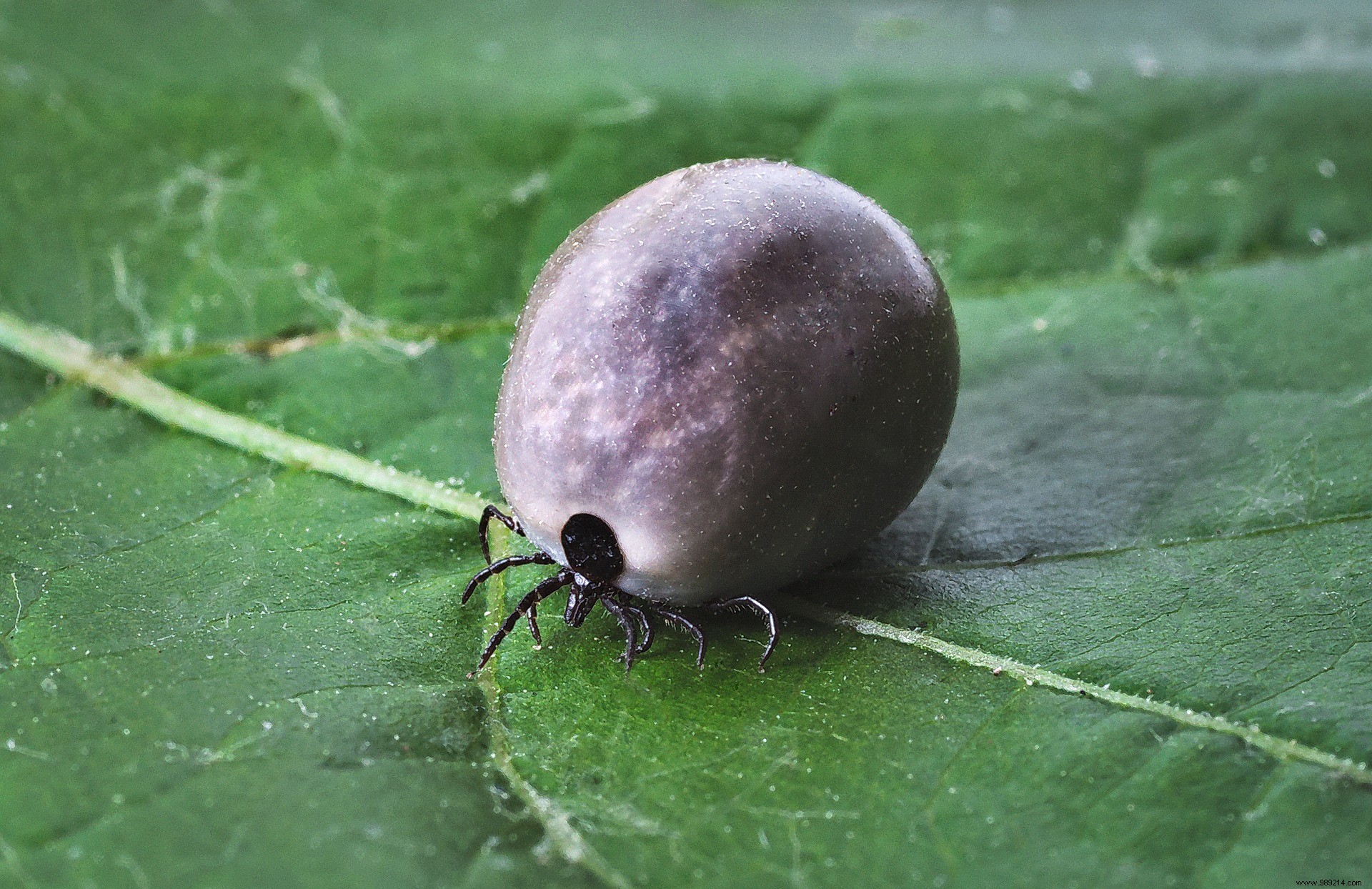A new Lyme disease vaccine in development has shown promising results in tests in mouse models. It remains to translate these same results in humans. Details of the study are reported in the journal Science Translational Medicine.
Blacklegged ticks (Ixodes scapularis ) are known to transmit the bacterium Borrelia burgdorferi, which causes Lyme disease. In France, between 25,000 and 68,000 cases were recorded each year in 2009 and 2019. Although the infection often does not trigger any symptoms, it can nevertheless sometimes lead to a debilitating disease characterized, for example, by long-lasting joint pain or partial paralysis of the limbs.
For the time being, treatment is based on taking antibiotics (in the event of neurological damage) combined with treatment with corticosteroids. But could we prevent the transmission of these bacteria in the first place? Researchers are working on it.
Some animals, especially rabbits, develop a natural resistance to tick bites after being bitten several times . An inflamed red welt then forms at the site of the bite. This immune reaction interferes with the tick's ability to suck the animal's blood. Very often, the tick finally abandons its meal by unhooking itself.
However, you should know that the vector of the disease is not transmitted immediately. To do this, as a general rule, a tick must indeed remain attached to its host for more than 48 hours. In an effort to be discreet and eat quietly, the tick secretes saliva containing proteins that suppress the host's immune response, reducing the pain and inflammation triggered by the bite.
Thus, in immunized animals, the tick usually falls off before the pathogens can be transferred. To fight Lyme disease in the first place, therefore, you have to get the ticks to "take off" quickly in some way.

With this in mind, a team from the Institute of Parasitology of the Czech Academy of Sciences is working on the development of an mRNA vaccine capable of triggering an immune response specifically against the proteins contained in the saliva of these ticks .
To do this, the researchers isolated nineteen of these proteins, some known to suppress the host's immune response, others known to help the tick to nourish by dilating the target's blood vessels and preventing blood from clotting. The team then generated mRNA containing genetic instructions on how to build each of these proteins. This mRNA was then packaged into lipid nanoparticles, before being injected into guinea pigs.
Two weeks later, the researchers examined the rodents' blood and isolated specific antibodies against ten of the nineteen tick proteins included in the vaccine.
They then placed uninfected ticks on the animals to see if their bites would trigger an immune response. The vaccinated actually developed "substantial" redness around the tick bites within eighteen hours. By comparison, members of the unvaccinated control group had little redness around the site of their bite.
In addition, ticks attached to vaccinated animals consumed little blood and began to detach within 48 hours. After 96 hours, more than 80% of them had abandoned their host against only 20% of ticks on unvaccinated animals.
To see whether or not the vaccine could then help reduce the risk of Lyme disease transmission, the team conducted a second experiment in which they placed three ticks on each animal. Since humans would notice and likely remove a tick if it caused significant redness on their skin, the team unhooked the insects once redness developed around their bites.
After the experiment, six of thirteen unvaccinated guinea pigs tested positive for B. burgdorferi, while none of the vaccinated guinea pigs tested positive. .
This research is obviously only in its infancy and these results have yet to translate to humans. However, the authors suspect that humans may react to the vaccine "in a manner similar to guinea pigs “because neither of our two species is truly important to the natural life cycle of this bacterium.